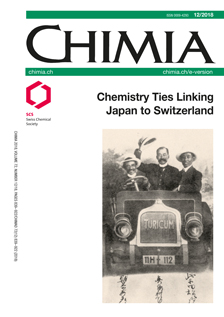Enzyme-like Regiodivergent Behavior of a Flavopeptide Catalyst in Aerobic Baeyer-Villiger Oxidation
DOI:
https://doi.org/10.2533/chimia.2018.866PMID:
30648952Keywords:
Aerobic oxygenation, Baeyer-villiger oxidation, Biomimetic catalyst, Flavin, PeptideAbstract
We recently developed a flavopeptide immobilized on polystyrene resin, Fl-Pep-PS, that could realize the first N5-unmodified neutral flavin (Fl)-catalyzed aerobic oxygenation reactions under non-enzymatic conditions. Although a key active species is assumed to be the corresponding 4a-hydroperoxyflavin (Fl4aOOH) from the unprecedented activity and unique chemoselectivity, further circumstantial support would be helpful to be sure since spectroscopic evidence is difficult to obtain due to the compound's insolubility. In this article, we report that the aerobic Baeyer-Villiger oxidation of a fused cyclobutanone, (±)-cis-bicyclo[3.2.0]hept-2-en-6-one (1), can be promoted with Fl-Pep-PS in a FMO-like chemoselectivity and regiodivergent manner via Fl-related catalytic intermediates, which delivers strong evidence of the involvement of Fl4aOOH as an active species in Fl-Pep-PS-catalyzed aerobic oxygenation reactions.Downloads
Published
2018-12-19
Issue
Section
Scientific Articles
License
Copyright (c) 2018 Swiss Chemical Society

This work is licensed under a Creative Commons Attribution-NonCommercial 4.0 International License.
How to Cite
[1]
K. Yamanomoto, H. Kita, Y. Arakawa, K. Minagawa, Y. Imada, Chimia 2018, 72, 866, DOI: 10.2533/chimia.2018.866.







